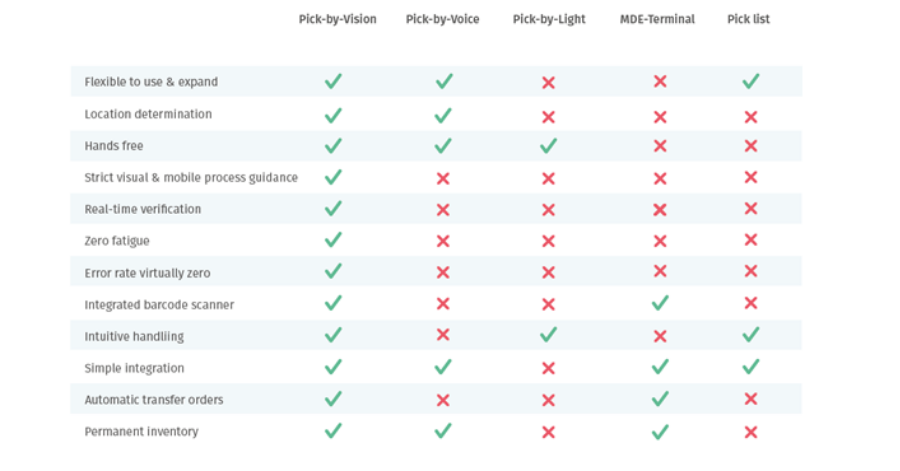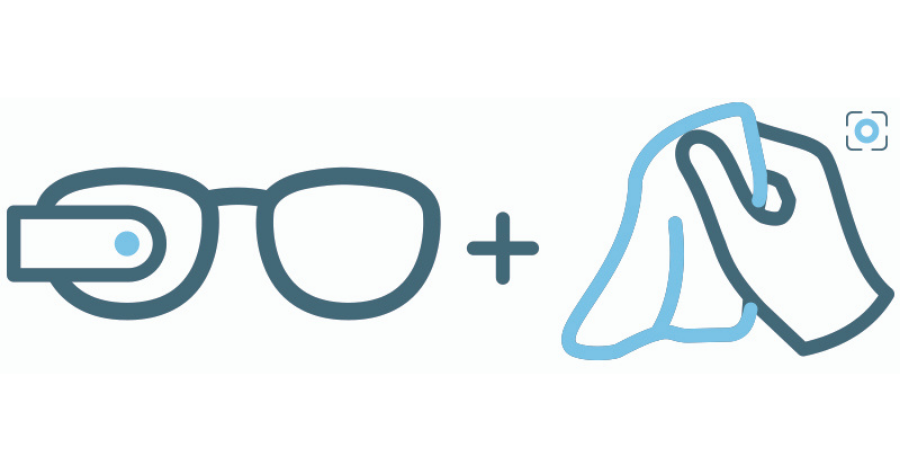During COVID-19 more pump manufacturers have taken a close look at logistics fulfillment processes. High SKU volume in warehouses with ten or more pickers are problematic because most pump equipment manufacturers fail to tailor the technology best-practices.
Pump equipment manufacturers may require an overall audit or assessment from layout to processes enhancing and optimizing productivity and efficiency. Some of the top pump equipment manufacturers are evaluating how to best harness real-time warehouse data that permits benchmarking of the fulfillment processes.
 COVID is the 2021 technology driver putting safety considerations at the top best picking solutions. Several of the following pump companies are considering migrating toward pick-by-vision and away from pick-to-light and voice picking including Godwin, Zoeller Company, General Pump, Teikoku USA, Iwaki America, Mangatex Pump, Titan Manufacturing, Roth Pump, Pumptech, Hayward Flow Control, and Tri-Rotor to name a few.
COVID is the 2021 technology driver putting safety considerations at the top best picking solutions. Several of the following pump companies are considering migrating toward pick-by-vision and away from pick-to-light and voice picking including Godwin, Zoeller Company, General Pump, Teikoku USA, Iwaki America, Mangatex Pump, Titan Manufacturing, Roth Pump, Pumptech, Hayward Flow Control, and Tri-Rotor to name a few.
Pump equipment warehouse shift to Pick-by-Vision during COVID
COVID-19 is on everyone’s mind and pick-by-vision ensures employees safety and avoids employee cross-contamination. Each pump distribution center picker has their own set of glasses, at least for the shift, and no one else touches it. Compared to pick-to-light which has many different hands potentially cross-contaminating, the pick-by-vision solution is far safer.
The glasses are the easiest device to disinfect since users can clean with a 0.5% detergent-water solution, such as natural detergent or mild dishwashing soap. Alternatively, glasses may be cleaned using a 70-80% isopropyl alcohol to a clean also using a soft damp cloth to wipe down all surfaces. With voice picking solutions warehouses and distribution centers would have to exchange all the parts, many of which cannot be wiped down. Glasses need only be touched twice during a shift, creating a contactless and handsfree safe work environment.
Interfaced with the pump manufacturers’ WMS (Warehouse Management System), pick-by-vision simply communicates with the worker on the shop floor via the smart glasses without returning to the home base. The analytics monitor order changes in real-time and reduces inventory by eliminating bottlenecks and reducing work-in-process (WIP).
Pump warehouses require actionable data
Leveraging the data that the smart glasses gather via sensors provide an array of actionable information. Showing the warehouse manager data from the pump equipment distribution center ensures transparency to individual KPIs (key performance indicators) in a dashboard. The logistics manager has all the information right at hand versus spending hours digging into the WMS data. Analytics also track screen times, determining where in the process the company is losing time. Think of Overall Equipment Effectiveness (OEE) for the pump warehouse.
Intelligence solutions provide specific KPIs such as picks per hour, picks per location, or an ABC analysis can be monitored in dashboards. The smart glasses have a remote support function that uses push notifications to allow important messages to be shared between workers and the control room during operations in both visual and audio form. The remote support function enables contactless, bi-directional and individual communication in the warehouse. This allows staff in the control room to communicate directly with individual workers or a team of workers, regardless of their current location in the warehouse. This makes it possible to share important messages during operations without drops in productivity.
Lean Manufacturing at the lean warehouse level
Determining opportunities for cost reduction inside the four walls must move beyond the engineering and production manufacturing plant floor. Pump manufactures must evaluate a warehouse slotting strategy and determine warehouse KPIs or metrics. Auditing and/or benchmarking warehouse or 3PL costs, evaluating process cycle times, and value stream mapping (VSM) the existing warehouse processes are critical in fast turning pump equipment operations.
A warehouse worker can put on a pair of AR-enabled glasses and use them to stay updated on delivery lists, inventory counts, and other priorities (versus having to use spreadsheets, mobile devices, or phone calls). The same employee can receive directions from the glasses, which can guide him or her through the order picking processes in the fastest, most efficient manner.
During busy times of the year, distribution centers can use AR-enabled glasses to get their temp workforces up to speed and operating quickly, without the need for intensive on-the-job training. Using pick-by-vision technology—where AR devices are used to highlight boxes or shelf locations to pick from—workers always know exactly where to look for specific items in the warehouse.
 Author Profile:
Author Profile:
Carsten Funke is the CEO of Picavi US, Inc. He took the position of the North American pick-by-vision solution in 2019.





Comments